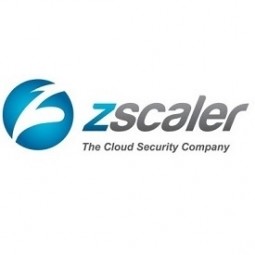技术
- 分析与建模 - 实时分析
- 网络安全和隐私 - 应用安全
适用行业
- 水泥
- 国家安全与国防
用例
- 篡改检测
- 交通监控
服务
- 云规划/设计/实施服务
关于客户
住房发展金融有限公司 (HDFC) 是印度最大的住房抵押贷款公司,成立于 1977 年。HDFC 拥有超过 300 万客户,不仅在印度而且在全球拥有重要影响力,分支机构遍布世界各地。该公司总部位于印度孟买。鉴于 HDFC 的地理覆盖范围广泛,其主要目标是找到一种更有效的方法来保护其网络流量免受不断变化的威胁环境的影响。
挑战
印度最大的住房抵押贷款公司 HDFC 的旧式网络安全解决方案面临巨大挑战。现有系统效率低下,仅提供针对已知威胁的保护,并且需要大量维护才能获得防病毒签名。该系统不仅难以维护,而且成本高昂,需要在时间、人力和技术方面投入大量资金。旧式解决方案通过位于总部的中央网关扫描来自所有分支机构的 Web 流量,由于需要将流量从所有位置回传到中央点,因此成本效益不高。此外,该系统无法有效扫描高级 Web 威胁以及因 Web 2.0 应用程序使用量增加而产生的威胁。
解决方案
HDFC 采用 Zscaler 基于云的 Web 安全解决方案,该解决方案为所有用户提供全面的、基于策略的安全性,无论其位置或设备如何。 HDFC 的 Web 流量从其网关转发到 Zscaler 云服务,并使用 Active Directory 组策略无缝实施策略。该解决方案降低了成本和基础设施复杂性,因为 HDFC 管理员花费更少的时间和金钱来管理其 Web 安全基础设施和代理。 Zscaler 解决方案还保护 HDFC 的用户免受各种已知恶意软件以及恶意活动内容、僵尸网络和网络钓鱼攻击等高级威胁的侵害。该服务在实时扫描数据的每个字节时,为 Web 2.0 应用程序实施了细粒度的、基于用户的策略。 Zscaler 还通过可视化仪表板和强大的综合报告,在 Zscaler 基于云的日志基础设施的支持下,为 HDFC 提供其安全状况的全面可见性。
运营影响
数量效益

Case Study missing?
Start adding your own!
Register with your work email and create a new case study profile for your business.
相关案例.

Case Study
System 800xA at Indian Cement Plants
Chettinad Cement recognized that further efficiencies could be achieved in its cement manufacturing process. It looked to investing in comprehensive operational and control technologies to manage and derive productivity and energy efficiency gains from the assets on Line 2, their second plant in India.

Case Study
Data Capture for Afghanistan Forces
Electronic equipments on the field of Afghanistan provided information on the status of the vehicle and to identify potential threats surrounding it to the British Force. The monitoring and interpretation of this data requires robust and sophisticated digitization for data capture and communication.

Case Study
Digital Transformation of Atlanta Grout & Tile: An IoT Case Study
Atlanta Grout & Tile, a Tile, Stone & Grout restoration company based in Woodstock, Georgia, was facing challenges with its traditional business model. Despite steady growth over the years, the company was falling behind the web revolution and missing out on the opportunity to tap into a new consumer base. They were using independent software from different vendors for each of their department information and workforce management. This resulted in a lot of manual work on excel and the need to export/import data between different systems. This not only increased overhead costs but also slowed down their response to clients. The company also had to prepare numerous reports manually and lacked access to customer trends for effective business decision-making.
Case Study
Enhancing Security and Compliance in Remitly's Global Money Transfer Service with Fastly
Remitly, an online remittance service, was faced with the challenge of securing its proprietary global transfer network. The company needed a security solution that could meet PCI requirements and protect customers' sensitive transactions through its mobile application. The solution had to be capable of defending against new and emerging attack types without impacting performance. Remitly also had to deal with irregular traffic patterns, such as a sudden spike in account transfers from a small network segment on the Pacific coastline of South America. The company needed to determine in real time whether such traffic indicated an attack or valid requests. A traditional web application firewall (WAF) would not be able to distinguish this traffic, potentially leading to customer frustration if the IP was blacklisted.

Case Study
Major Aerospace Company Automates Asset Management
The O&M division of an aerospace and global security company was using spreadsheets to manually track more than 3,000 assets assigned to students and staff. Maintaining audit trails for this high volume of equipment became increasingly time-consuming and challenging. The chore involved knowing precisely what equipment was on hand, what had been issued, its location and the name of the custodial owner of each item. Every aspect of this task was carried owner of each item. Every aspect of this task was carried out by individuals with spreadsheets. Manually documenting the full lifecycle of each asset added to the burden. This included tracking maintenance requirements and records, incidents and damages, repairs, calibrations, depreciation, and end-of-life data.








